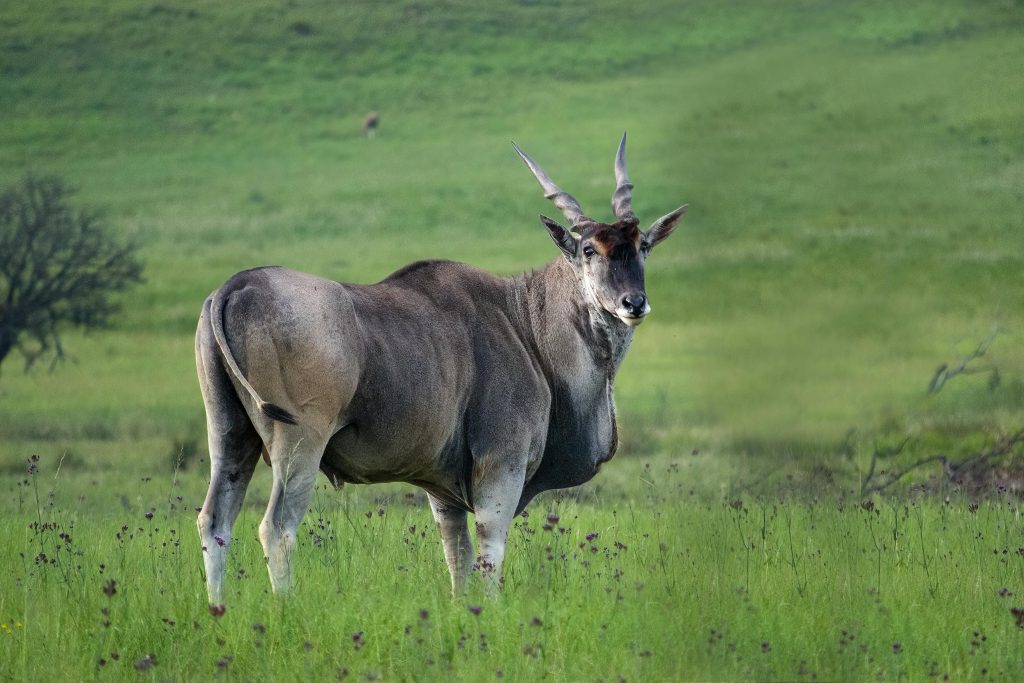DESCRIPTION
The Eland is the largest of the African antelope (Figure 1), with an adult eland bull standing about 1,7m (67”) at the shoulder and weighing in at approximately 700kg (about 1450lb).
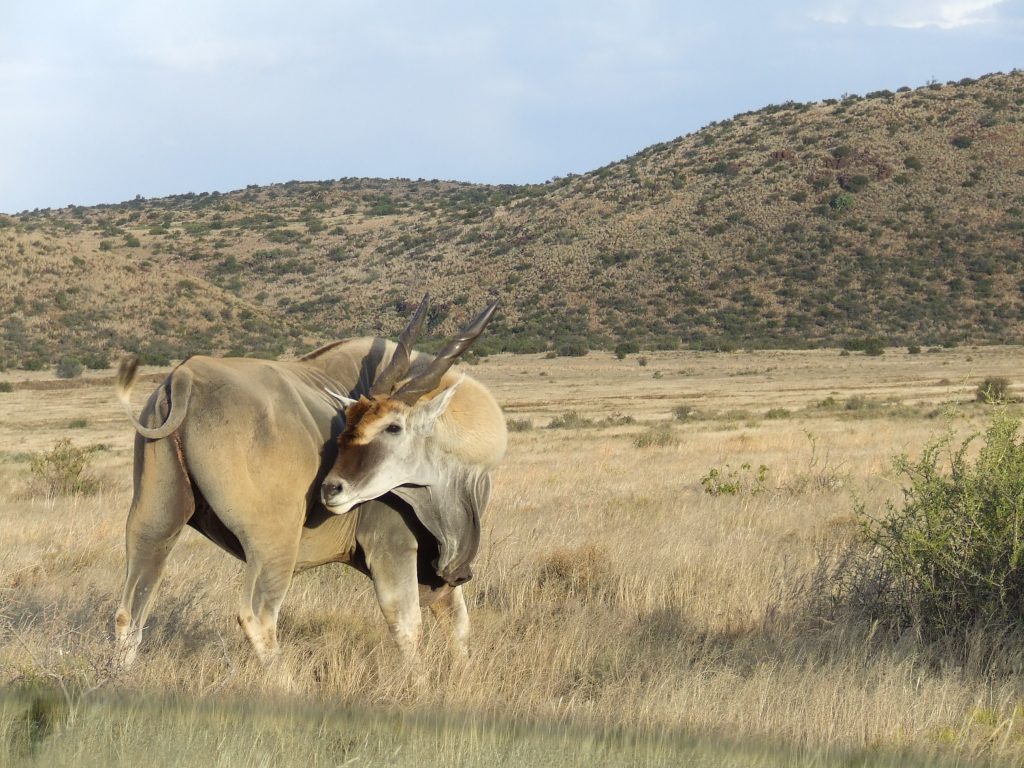
The smaller cows standing approximately 1, 5m at the shoulder weigh in at around 450kg (about 990lb). Elands are predominantly rufous fawn to tawny coloured but can darken with age. The sides of the body are lightly striped. There is a mat of chocolate brown or black hairs on the forehead of adult bulls and a short brown mane on the back of the neck, with a black stripe along the back of both sexes. Elands have a prominent dewlap, a loose flap of skin commencing on the throat, with a tuft of black hairs on the lower part. The tail is long, has a terminal black tuft, and reaches down to the hocks. The large ears are narrow and pointed. Horns are present in both sexes but are more robust in males. The spiral horns diverge slightly and lie backward in line with the profile of the face. Horns are sometimes longer in females.
DISTRIBUTION
This species is fairly widely distributed in South Africa, Botswana, SW Namibia, and Zimbabwe. They also occur in Uganda, Kenya, Zambia, Angola, and north of the Zambezi in Mozambique.
HABITAT
Eland can utilize a wide range of habitats from semi-desert, and bushveld, through to mountain grassland. They can be found on the fringes of woodland but prefer not to frequent dense woodland or open grassland. As predominant browsers, they prefer bushveld where trees and shrubs are available.
HABITS
Eland are gregarious animals that move around in small herds. Large herds made up of smaller units have been recorded in Botswana and Zimbabwe. The calving season takes place from October to January. During this time adult bulls will leave the breeding herds to form bachelor groups.
Movements and migrations are generally determined by food preferences, availability, and seasonal rains. Eland will often move into burnt areas in search of fresh new growth.
There is no sign of territorial behaviour in eland. Hierarchy appears to be based on size and age. When disputes occur they can result in serious fights and mortalities have been reported.
Eland are fond of rubbing against objects and mutual grooming is commonly observed. Eland are not exclusively diurnal and can often be found active at night. They are generally silent animals but will vocalize occasionally. A characteristic “clicking” sound is heard in walking eland. The origin of the sound is not fully understood. In spite of their bulk and size, eland are accomplished jumpers and can clear a 2m (over 6ft) high fence with relative ease. They are generally shy animals and will trot off if approached too closely. They can maintain a steady trot for extended periods if disturbed.
If raised in captivity eland can tame easily and can be farmed like domestic cattle.
FEEDING AND DRINKING
Whereas they will drink water regularly when it is available, they can go for extended periods without drinking, by taking in sufficient moisture with their food to meet physiological requirements.
Eland are mainly browsers but show preference for new grass after a burn. Although their diet consists mainly of browse they will utilize grass in small quantities throughout the year.
Eland use their horns to break branches to get to food and have also been observed using their horns to strip bark.
They browse on a wide variety of species which include the following:
Marula (Sclerocarya birrea), bushwillow (Combretum spp.), false thorn (Albizia harveyi), Acacia spp., rain tree (Lonchocarpus capassa), sour plum (Ximenia caffra), “khakibos” (Tagetes minuta), blackjack (Bidens pillosa), mopane (Colophospermum mopane), Kirkia and Terminalia spp.
Grasses occasionally eaten by eland include Panicum spp., Urochloa mossambicensis, Schmidtia pappophoroides, and Chloris virgata.
PREDATION
Smaller predators do not pose a threat to eland. They are however preyed upon by lions. (Figure 2).
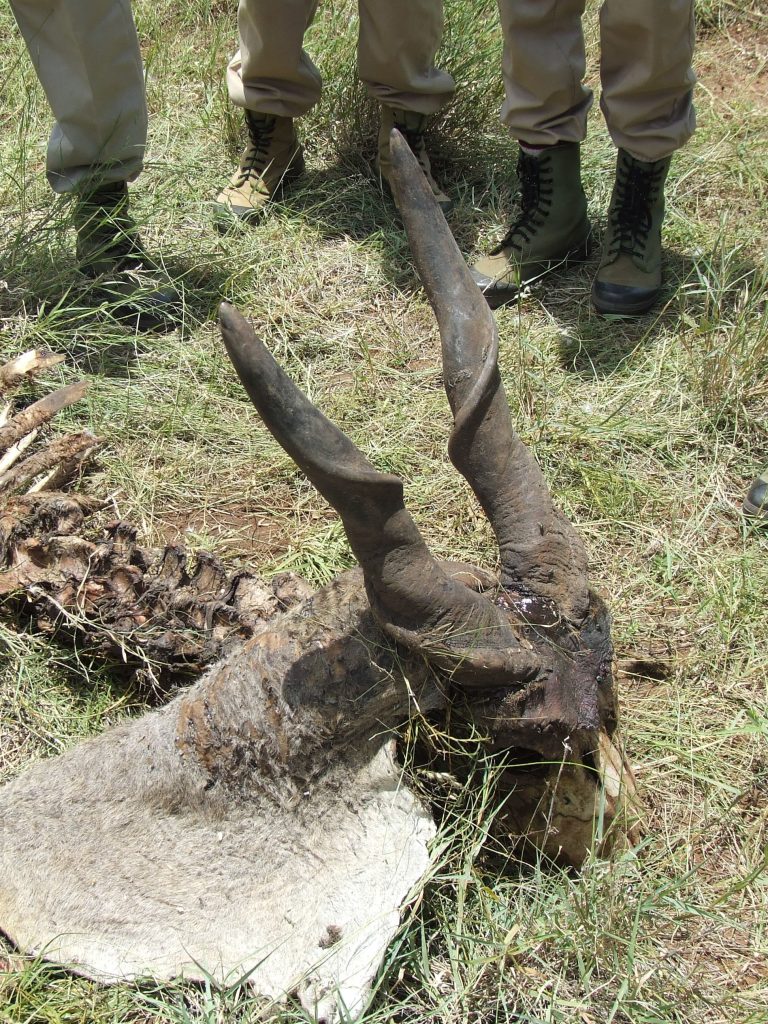
HUNTING THE ELAND
Trophy
To qualify for inclusion in the Rowland Ward record book a minimum horn length of 89cm (39”) is required. The record is 107,3cm (42 1/4 “). Hold the tape along the spiral when measuring horns (Figure 3).
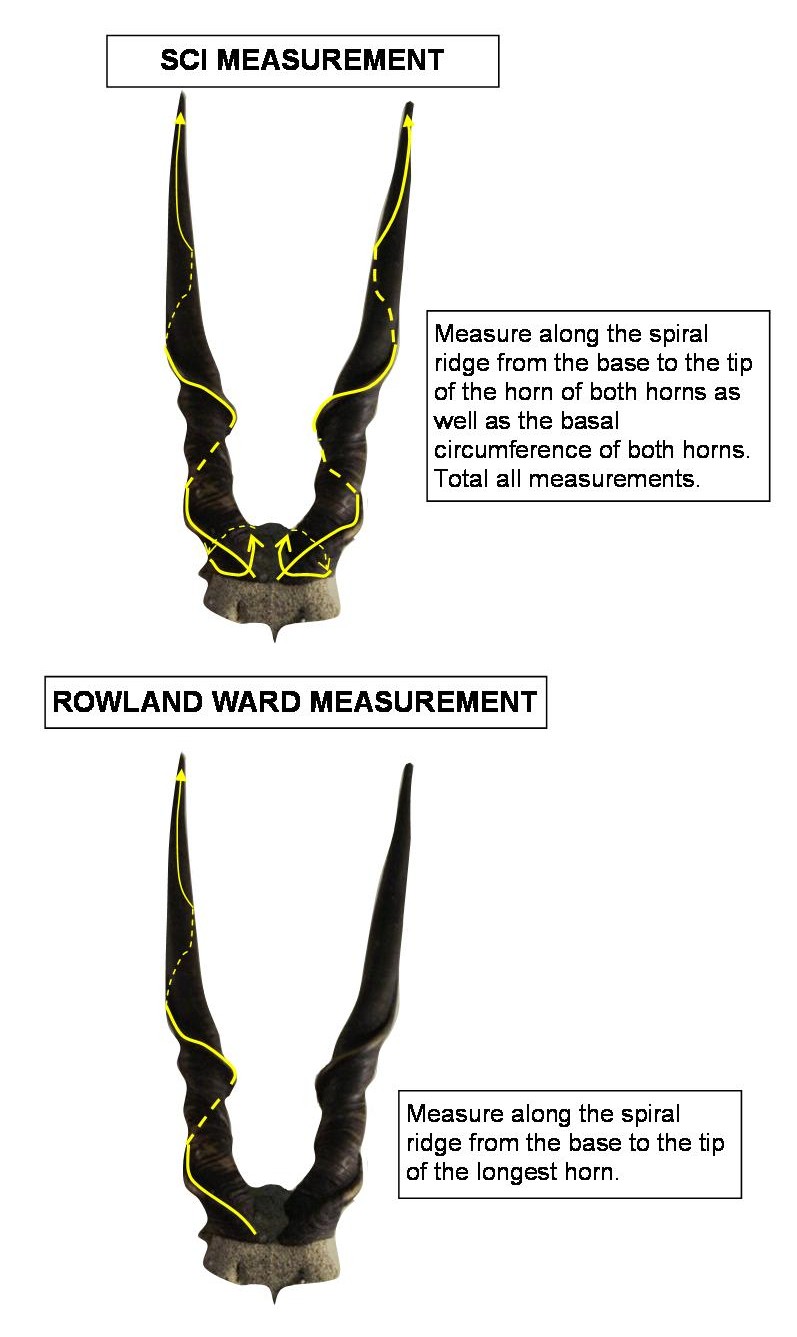
A minimum score of 77 is required for listing in SCI records. Measure the length and circumference of both horns and add together (in inches).
Signs to look for
Suitable habitat
Elands prefer fairly open bushveld and will generally avoid dense woodland. They will occasionally visit waterholes to drink but are fairly independent of surface water if enough browse is available.
Feeding sign
Keep an eye open for stripped bark and broken branches.
Tracks and scat
The track is a cloven hoof and rounder than most antelope. The front track is 100mm long and the rear track is 85mm long. The rear tracks are similar to, but more elongated than that of buffalo and domestic cattle. The rear tracks are slightly narrower but longer than the front tracks. See Figures 4 and 5.
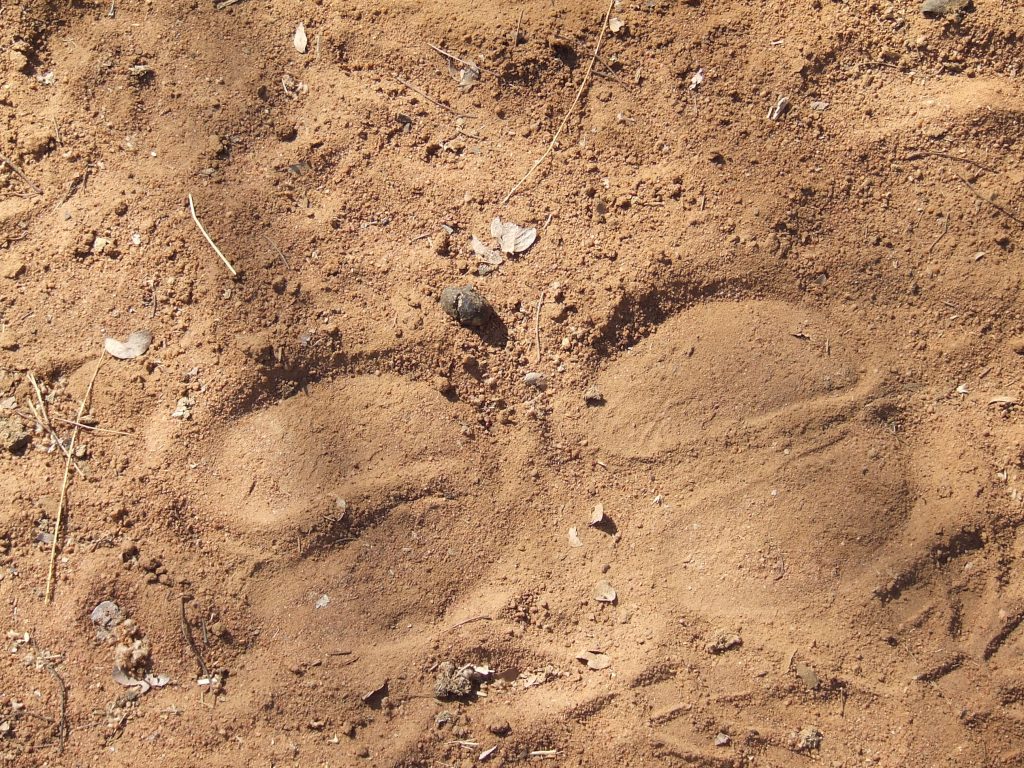
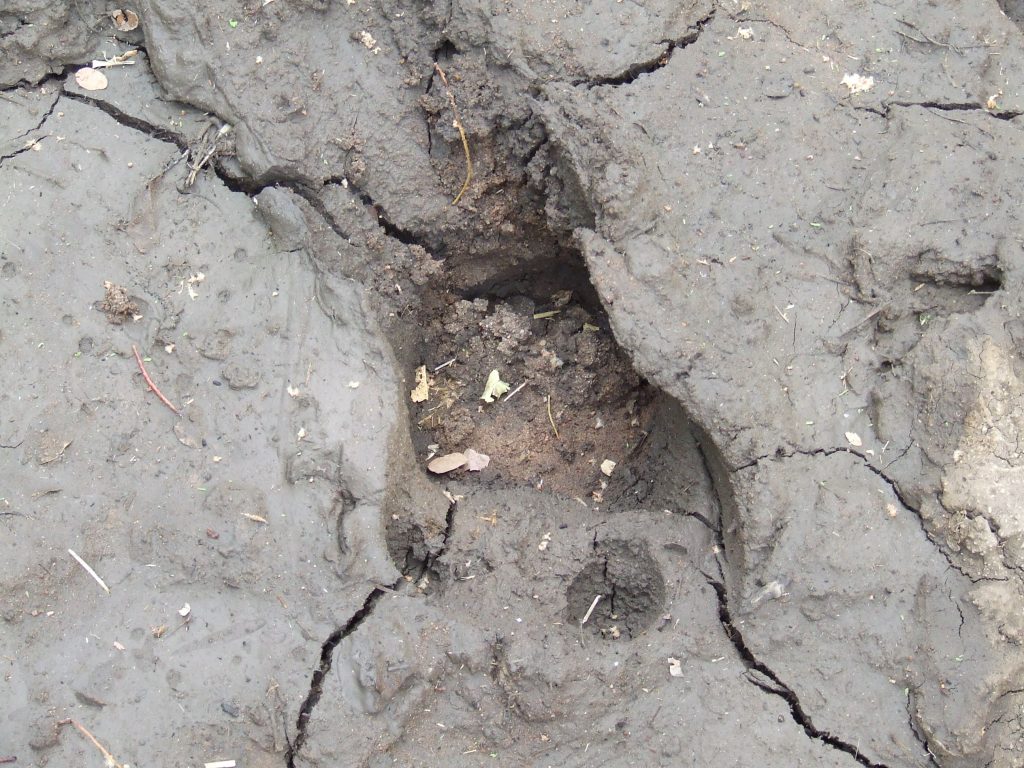
Dung pellets, 25mm long, are spherical pellets and second only in size to giraffes. Because eland are not territorial animals they do not generally deposit dung in middens. See Figure 6.
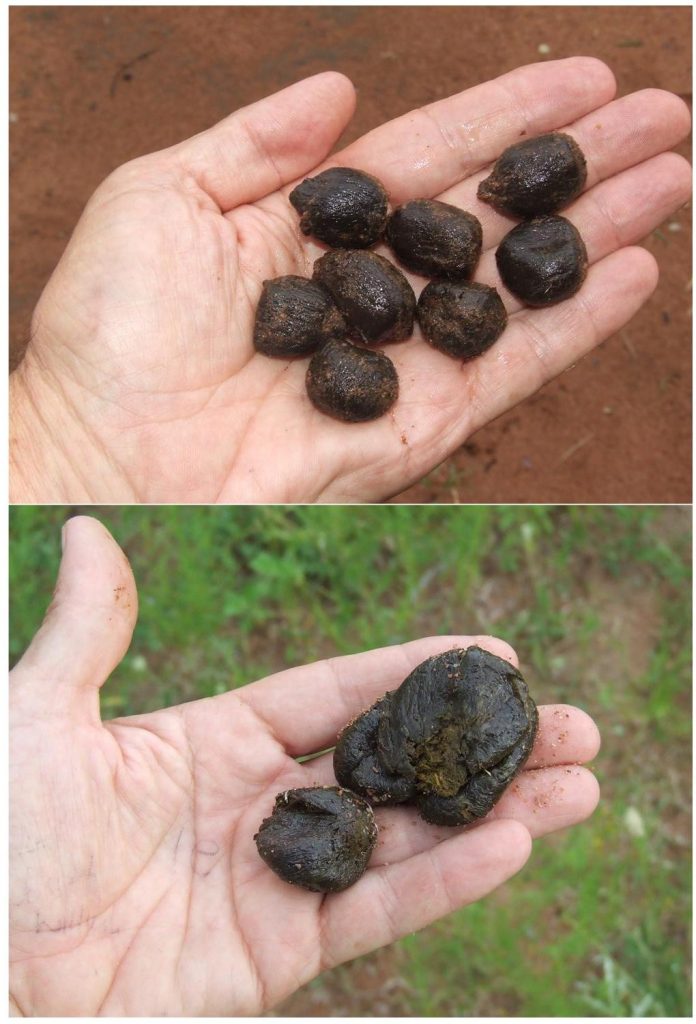
Hunting techniques
Eland can be successfully hunted using walk and stalk and spot and stalk techniques where eland occurs in typical bushveld, as this type of habitat lends itself well to these techniques. In semi-open to open grassland the aforementioned techniques will be a real challenge, as eland have good eyesight, and once their suspicions are aroused they will set off on a persistent, distance-eating trot, and will seldom wait around or stop to afford the bowhunter a second chance at a shot. They can also be successfully hunted from a ground blind, pit blind, or hide situated at, or en route to a mineral lick or waterhole. It must be remembered however that eland can be fairly independent of surface water and might visit waterholes either infrequently or on an erratic and unpredictable basis. Concentrate efforts in areas that have been recently burnt, where a green flush of new growth is present, and in bushveld habitat.
Shot placement
Eland are massive animals with a fairly substantial bone structure.
Only two shots are recommended – a broadside shot into the heart/ lung area or a quartering-away shot. See Figure 7.
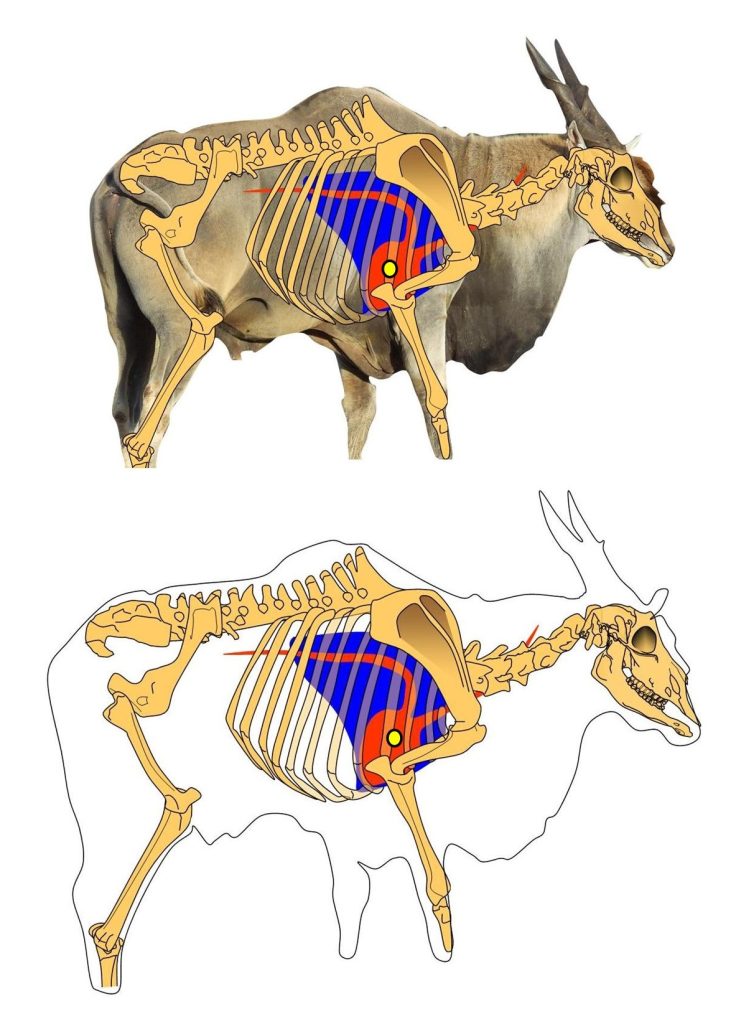
Follow up
Eland can be aggressive when wounded or cornered. Exercise caution during follow-up procedures. Allow 30 – 40 minutes to elapse before beginning with follow-up – after a heart/lung shot, at least an hour for a suspected liver shot, and a minimum of 6 hours for a gut shot. It would be advisable to have a rifle handy of 30-06 or bigger caliber when following up on an eland.
Choice of equipment
Eland are big animals with a solid muscle and bone structure. The skin is not as thick as that of buffalo or giraffe. The challenge will be to ensure that you get enough arrow penetration to effect double lung penetration. A broadhead of strong construction will be the order of the day. Use a broadhead weight of 125 grains or more. Do not use mechanical broadheads. Arrows of wood, aluminium, carbon, and carbon/aluminium composite will all work but must weigh at least 700 grains to ensure good momentum. A bow with a minimum 60-pound draw weight and preferably in excess of 75 pounds is recommended.

